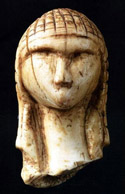Anthropology, Department of

Department of Anthropology: Faculty Publications
Document Type
Article
Date of this Version
2017
Citation
Article title: What can GIS + 3D mean for Landscape Archaeology?
Article reference: YJASC4712
Journal title: Journal of Archaeological Science
Corresponding author: Dr. Heather Richards-Rissetto
First author: Dr. Heather Richards-Rissetto
Final version published online: 31-Jul-2017
Full bibliographic details: Journal of Archaeological Science 84C (2017) pp. 10-21
DOI information: 10.1016/j.jas.2017.05.005
Abstract
Until recently Geographic Information Systems (GIS) have held center stage in the archaeologist's geospatial toolkit, and there is no doubt that archaeologists have moved beyond the mapdbut into what? In the early years, criticisms voicing GIS as environmentally-deterministic were abundant. What methods and tool have archaeologists used to overcome these criticisms? New geospatial technologies such as airborne lidar and aerial photogrammetry are allowing us to acquire inordinate amounts of georeferenced 3D datad but do these 3D technologies help overcome criticisms of environmental determinism? TogetherdGIS þ 3Dd can link georeferenced 3D models to underlying data adding a ground-based humanistic perspective lacking in the bird's eye view of traditional GIS. This paper situates GIS and 3D within a semiotic framework to offer some ideas on using 3DGIS to intertwine environmental and cultural factors to work toward new approaches for landscape archaeology.
Included in
Archaeological Anthropology Commons, Geographic Information Sciences Commons, Human Geography Commons, Latin American Languages and Societies Commons, Social and Cultural Anthropology Commons


Comments
Copyright © 2017 Elsevier Ltd. Used by permission.